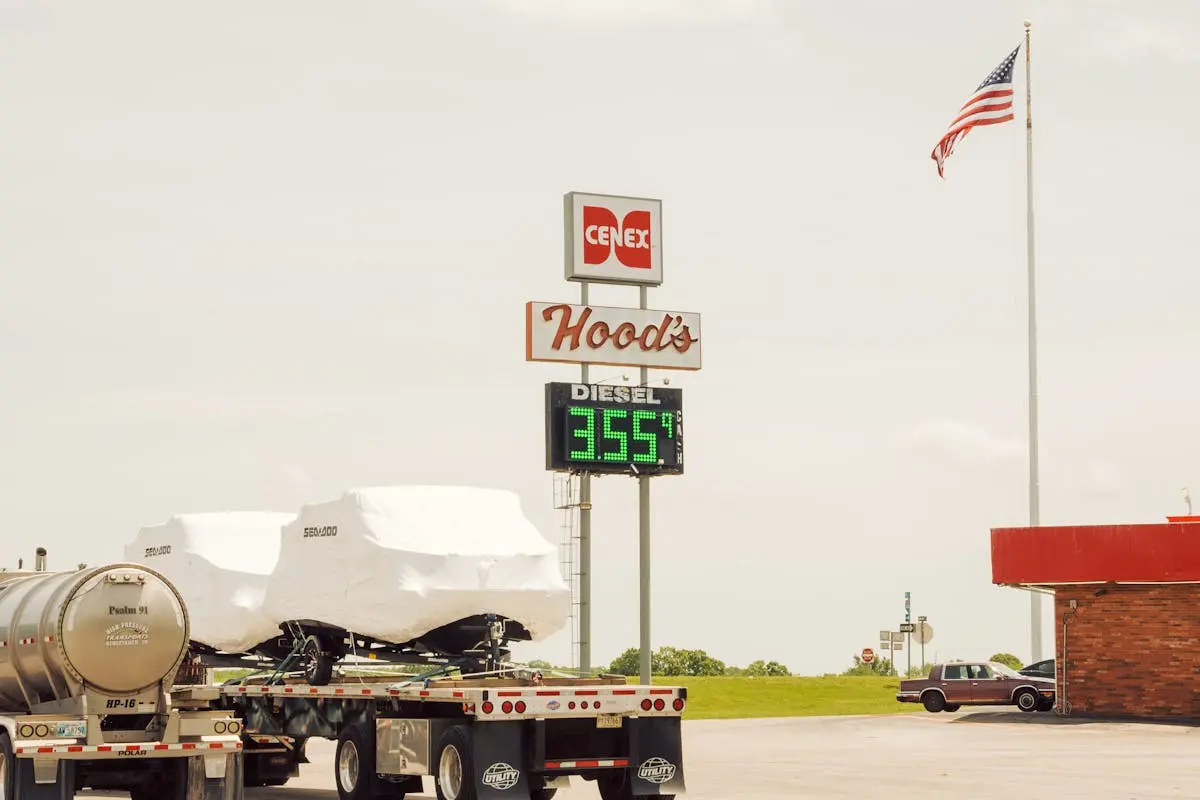How Supply And Demand Affect Spot Market Rates.
In the world of small trucking businesses, understanding how supply and demand influence spot market rates is crucial. Dive into the dynamics of the truckload industry where rates fluctuate based on the balance between available trucks and shipments. This constant ebb and flow creates opportunities for carriers to capitalize on high-demand lanes and strategic pricing models. By staying informed on market trends and adjusting strategies accordingly, trucking businesses can navigate through the challenges and leverage the fluctuations to their advantage.
For small trucking businesses, keeping a pulse on market demand and supply dynamics enables them to make informed decisions. It's essential to monitor rate changes, lane preferences, and emerging trends to adapt pricing strategies effectively. Additionally, leveraging technology and analytics can provide valuable insights for optimizing operations and maximizing profitability. Stay proactive and responsive to market shifts to position your trucking business for sustainable growth and success.
Understanding Supply and Demand
In the realm of the small trucking business, supply and demand play a pivotal role in determining spot market rates. When the industry experiences an abundance of trucks and drivers relative to the number of shipments available, rates tend to decrease. On the flip side, when the demand for shipments surpasses the available trucks and drivers, rates spike. This essential balance between supply and demand encapsulates the essence of spot market rate fluctuations in the truckload industry.
In a 'loose' market scenario where there is an oversupply of trucks, shippers hold the advantage. Shippers can negotiate lower rates and choose from a pool of available carriers to transport their goods. Conversely, in a 'tight' market where there is a shortage of trucks, carriers have the upper hand. Carriers can be selective with the shipments they choose to carry and demand higher rates due to the increased competition among shippers vying for limited capacity.
As a small trucking business, mastering the nuances of supply and demand dynamics is crucial for making well-informed decisions. By closely tracking market trends and comprehending the interplay between truckload volume and carrier supply, you can strategically position your business to seize opportunities in favorable rate conditions and effectively navigate challenges in market downturns.
Factors Influencing Spot Market Rates
Various factors contribute to the volatility of spot market rates in the small trucking business landscape. Economic conditions, seasonal fluctuations, fuel prices, regulatory changes, and unforeseen events like natural disasters can all influence supply and demand dynamics. For instance, during peak shipping seasons or when capacity is constrained due to external factors, rates are prone to escalation as demand outstrips supply.
Moreover, technological advancements, shifts in consumer behavior, and geopolitical events can impact spot market rates. By monitoring these various factors and understanding their influence on supply and demand, small trucking businesses can adjust their pricing strategies and operational methods to manage risks and take advantage of opportunities in the continually changing market environment.
Navigating the complex web of influences on spot market rates requires a proactive and adaptive mindset. Being proactive in monitoring industry trends, maintaining flexibility in adjusting pricing models, and fostering strong relationships with customers and carriers are essential strategies for small trucking businesses to thrive amidst the dynamic nature of the market.
Effects of Supply and Demand on Pricing
The interconnected nature of supply and demand directly influences pricing strategies in the small trucking business sphere. When truckload volume surges relative to carrier capacity, shippers find themselves in a competitive environment where securing available trucks becomes challenging. This heightened demand leads to an escalation in spot market rates as carriers capitalize on the scarcity of capacity to command higher prices.
Conversely, when truckload volume dwindles in comparison to carrier availability, carriers face heightened competition for freight opportunities. In this scenario, rates experience a downward trend as carriers lower prices to attract shipments and fill their trucks. Understanding these pricing dynamics enables small trucking businesses to adapt their business models to maximize revenue generation and maintain competitiveness in fluctuating market conditions. For example, in 2024, the average contracted and spot rates play a significant role in influencing pricing strategies. Import demand and other factors also impact the fluctuations in rates, highlighting the importance of staying informed and responsive to market changes.
For small trucking businesses, harnessing the insights derived from supply and demand interactions empowers companies to optimize their pricing strategies, enhance operational efficiency, and forge symbiotic relationships with shippers and carriers. By leveraging data-driven decision-making and fostering a nimble approach to market changes, small trucking businesses can thrive in the ever-shifting landscape of spot market rates.
Embracing the fluidity and unpredictability of supply and demand dynamics positions small trucking businesses to navigate the intricacies of spot market rates with agility and foresight. By aligning operational decisions with market trends and customer demands, businesses can proactively respond to changes, capitalize on growth opportunities, and cultivate a resilient presence in the competitive truckload industry.
Navigating the Supply and Demand Terrain
As a small trucking business, staying attuned to the fluctuations in supply and demand can give you a competitive edge in navigating spot market rates for your services. Embrace the ebb and flow of the market to optimize your operations and profitability. Monitor industry trends, build strong relationships with shippers and brokers, and constantly evaluate your pricing strategy to stay agile in a dynamic market environment. By staying informed and adaptable, you can make strategic decisions that position your business for success in the ever-changing transportation industry. Stay proactive in seeking out new opportunities for growth and expansion, and be willing to adjust your business model as needed to meet evolving customer demands. Keep an eye on emerging technologies and trends that could disrupt the industry, and be ready to pivot your strategies to stay ahead of the competition. Innovation and flexibility will be key to your long-term success.


